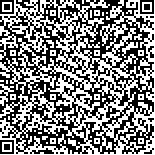| 摘要: |
| [摘要] 目的 探讨3D酰胺质子转移加权(APTw)影像组学模型在预测脑胶质瘤异柠檬酸脱氢酶(IDH)突变状态和WHO分级中的诊断价值。方法 回顾性分析2021年4月至2022年9月经手术病理证实的98例脑胶质瘤患者的临床资料及术前MRI图像。基于常规MRI平扫和增强图像对病灶的强化区、坏死区及瘤周水肿区进行手动分割,然后在原始3D APTw图像及衍生图像上进行特征提取。利用Least Absolute Shrinkage and Selection Operator(LASSO)模型选择方法,以预测脑胶质瘤IDH突变状态和WHO分级为目的,分别进行特征选择。再采用4种分类器构建预测脑胶质瘤IDH突变状态和WHO分级的影像组学模型,利用五折交叉验证训练并评估模型,最后通过受试者工作特征(ROC)曲线评估模型的效能。结果 采用XGBoost、Random Forest、Logistic Regression及Support Vector Machine 4种机器学习算法来预测脑胶质瘤IDH突变状态,以全瘤和瘤周水肿构建影像组学模型,其曲线下面积(AUC)值分别为0.778、0.800、0.797、0.792;以肿瘤的强化区构建影像组学模型,其AUC值分别为0.819、0.776、0.766、0.654。在预测脑胶质瘤WHO分级中,以全瘤和瘤周水肿构建的影像组学模型,其AUC值分别为0.806、0.810、0.814、0.720;以肿瘤的强化区构建影像组学模型,其AUC值分别为0.810、0.803、0.817、0.783。结论 基于3D APTw构建的影像组学模型能有效预测脑胶质瘤的IDH突变状态和WHO分级。 |
| 关键词: 3D酰胺质子转移加权 影像组学 脑胶质瘤 异柠檬酸脱氢酶 |
| DOI:10.3969/j.issn.1674-3806.2023.04.06 |
| 分类号:R 445.2 |
| 基金项目:湖北省自然科学基金项目(编号:2021CFB447) |
|
| A study on prediction of IDH mutation status and WHO grading of glioma based on 3D amide proton transfer-weighted imaging radiomics model |
|
QIN Qian, GAO Xuan, ZHANG Lan, et al.
|
|
Department of Radiology, Union Hospital, Tongji Medical College, Huazhong University of Science and Technology, Wuhan 430022, China; Hubei Province Key Laboratory of Molecular Imaging, Wuhan 430030, China
|
| Abstract: |
| [Abstract] Objective To explore the diagnostic value of a radiomic model based on the three dimensional(3D) amide proton transfer-weighted(APTw) imaging radiomics model in predicting the isocitrate dehydrogenase(IDH) mutation status and World Health Organization(WHO) grading in patients with gliomas. Methods The clinical data and preoperative magnetic resonance imaging(MRI) images of 98 patients with postoperative pathologically confirmed glioma between April 2021 and September 2022 were retrospectively analyzed. Based on the conventional MRI plain scan and enhanced images, the enhanced areas, necrotic areas and peritumoral edema areas of the lesions were manually segmented, and then feature extraction was performed on the original 3D APTw images and derived images. The Least Absolute Shrinkage and Selection Operator(LASSO) model selection method was used to select features for the purpose of predicting the IDH mutation status and WHO grading of glioma, respectively. Four classifiers were then used to construct an radiomics model for predicting the IDH mutation status and WHO grading of glioma. The model was trained and evaluated using five-fold cross-validation, and finally the receiver operating characteristic(ROC) curve was used to evaluate the performance of the model. Results Four machine learning algorithms including XGBoost, Random Forest, Logistic Regression and Support Vector Machine, were used to predict the IDH mutation status of glioma, and the area under the curve(AUC) values were 0.778, 0.800, 0.797 and 0.792 for the whole tumor and 0.819, 0.776, 0.766 and 0.654 for the enhanced area of glioma, respectively. In the prediction of glioma WHO grading, the AUC values were 0.806, 0.810, 0.814 and 0.720 for the whole tumor model and 0.810, 0.803, 0.817 and 0.783 for the enhanced tumor area model, respectively. Conclusion The radiomics model constructed based on the 3D APTw imaging can effectively predict the IDH mutation status and WHO grading of glioma. |
| Key words: 3D amide proton transfer-weighted imaging Radiomics Glioma Isocitrate dehydrogenase |

